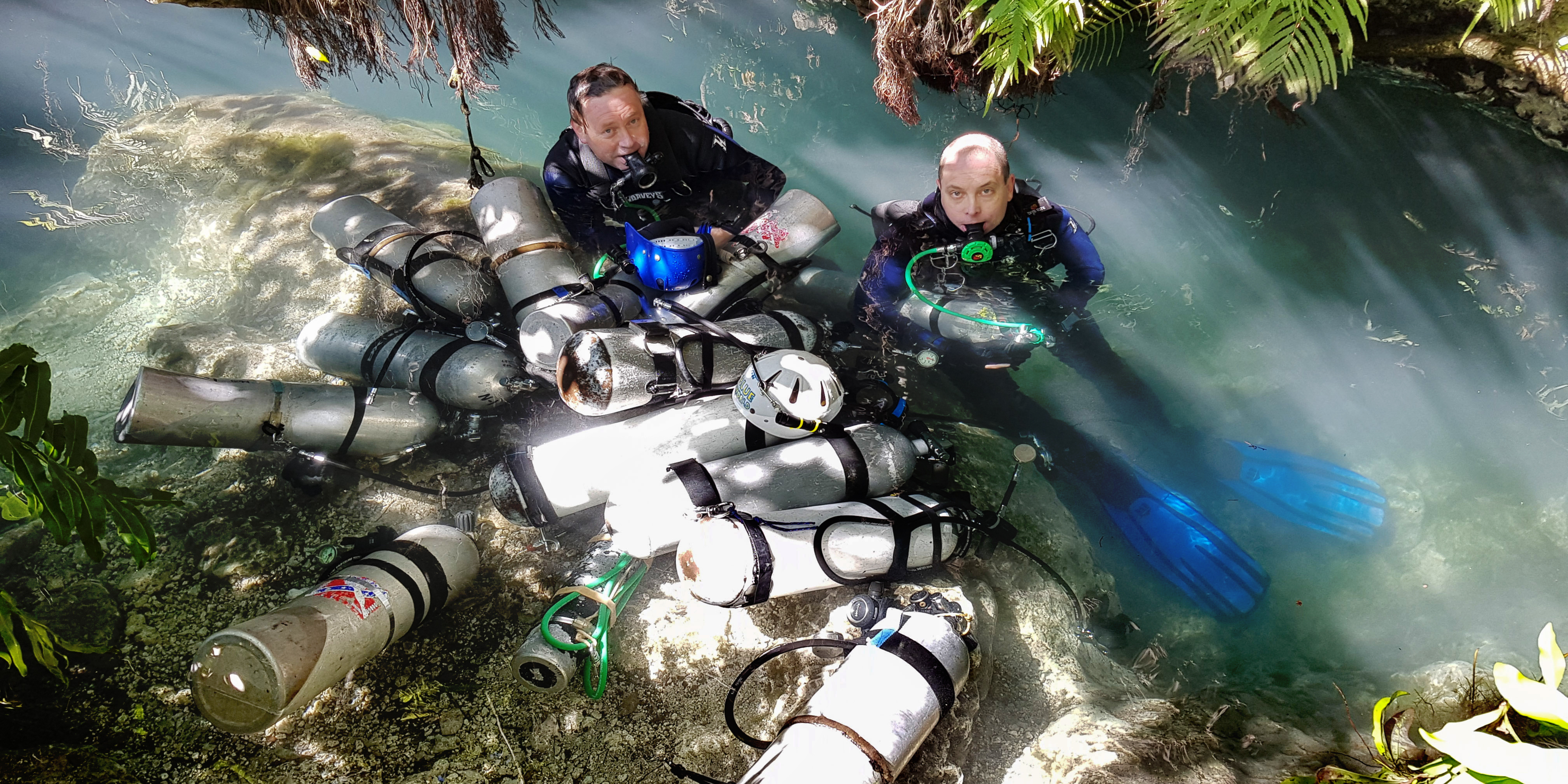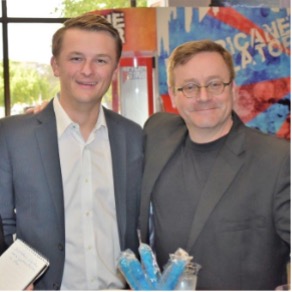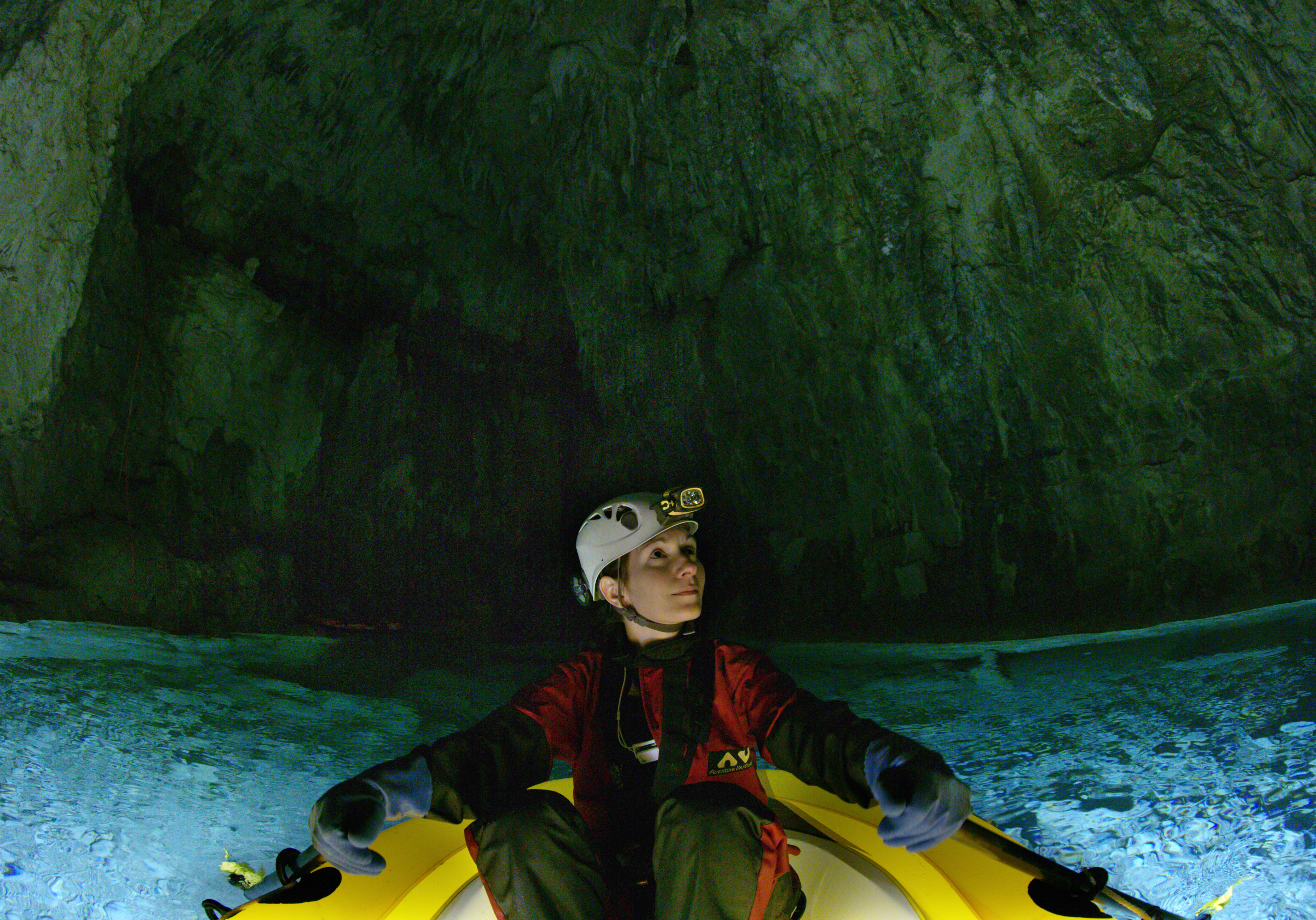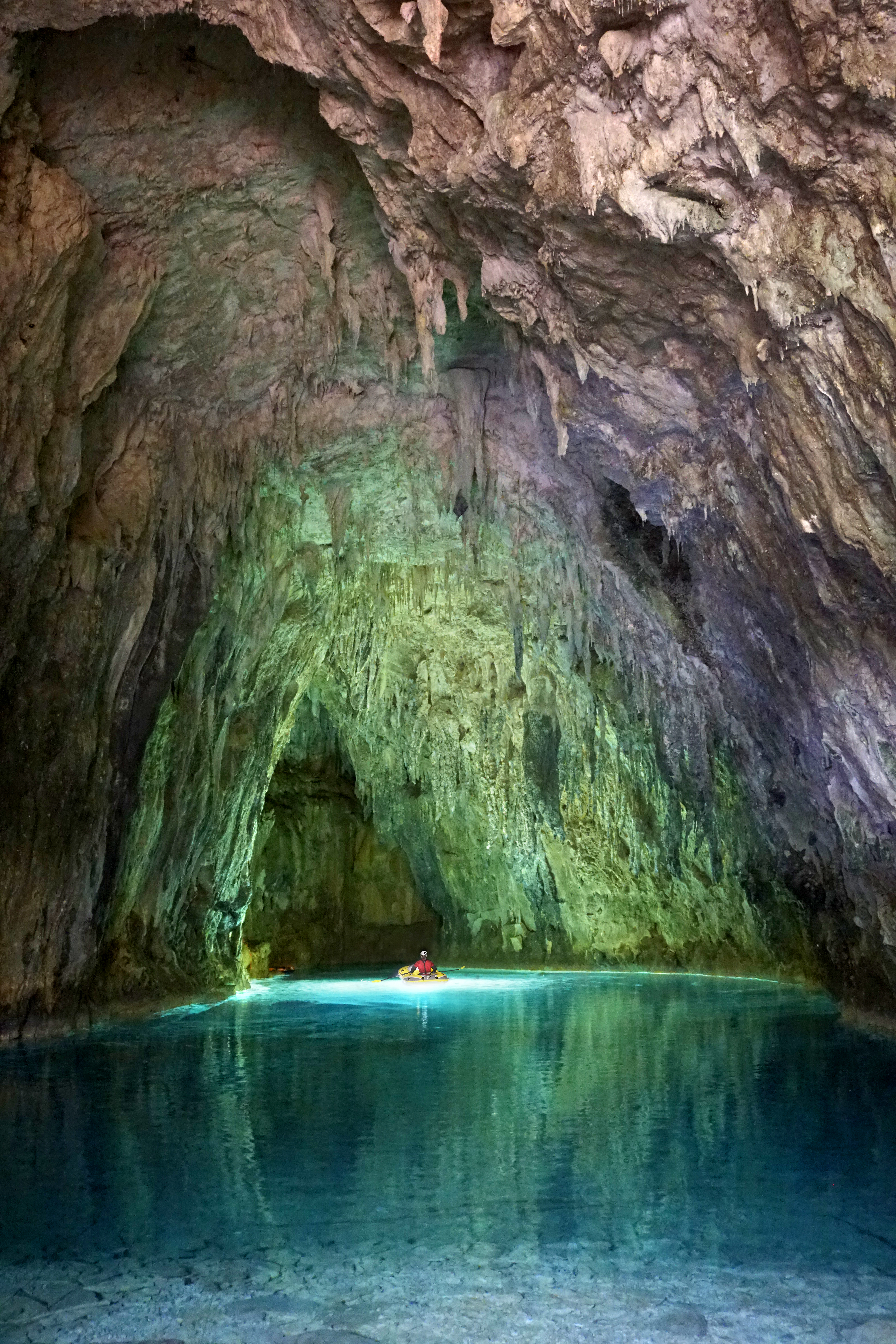
Craveology Cafe and the North Star Science Store are temporarily closed for renovation.

(Image above) Jonathan Bird (left) and support diver Todd Kelly complete decompression on oxygen after a three-hour dive to Fangorn Forest in Crystal Cave, Abaco, Bahamas, where Kelly got stuck in a tight spot. All the scuba divers were required to swim more than a mile to Fangorn, one of the most remote places on Earth.
Director Jonathan Bird talks filming exclusively for the Dome, rain in the desert and that guy who got stuck
The Fleet recently had the great pleasure of chatting with Ancient Caves director Jonathan Bird and cinematographer Zach Peterson at the VIP preview of the film at the Fleet’s Heikoff Giant Dome Theater.
Bird, an Emmy award-winning cinematographer who specializes in underwater production, grew up watching 70 mm IMAX movies at the Mugar Omni Dome Theater at the Museum of Science in Boston, so his fascination with the medium began early. “To me, a dome was IMAX, so when I wanted to make IMAX films I wanted to do them for domes.”
According to Bird, the dome experience is the most realistic way for filmmakers to engage with their audiences.
“It looks exactly as it does to the camera operator, and this can never be replicated with a TV, a regular movie screen or even a flat IMAX screen,” Bird said.
The Fleet is home to the world’s first IMAX Dome Theater. Bird shared that organizations like the Fleet are truly the only place moviegoers can have this immersive film experience.
Ancient Caves is the first film specifically shot for a dome in more than 30 years, so it’s particularly special.
“For storytelling, it’s incredible,” Bird continued. “The beautiful, incredible imagery takes people where they probably never will go. We want people to come away with a better understanding of the world, and the dome experience helps us do that. Finally, we also do want to entertain people.”
The dome clearly enhances storytelling and Bird’s vision for Ancient Caves is a crucial part of the experience for moviegoers.
In our conversation with Bird, he said he knew he wanted to make a 70 mm dome film, but he just couldn’t come up with a good idea. Inspiration struck when Bird, an accomplished diver and president and founder of Oceanic Research Group Inc., learned to cave dive. He was diving in the Crystal Caves in Abaco, Bahamas, and thought, “This is it!” He now had the place, so he started thinking about what kind of story would grab and keep the attention of audiences.
“‘What kind of science are they doing in caves?’ I wondered, so I worked backwards from the place to the story,” Bird said.
The story of Ancient Caves follows a group of researchers led by paleoclimatologist Gina Moseley, Ph.D., who collect samples from these caves both above ground and below water to learn more about climate change.
Bird and his team still had a lot of work to do to make sure that story is clear, compelling and captivating to moviegoers, however. Bird explains that making a film specifically for a dome is more difficult than making a film for a flat screen, but the tradeoff is that the filmmaker can achieve those lasting moments that bring moviegoers into the scene.
An example of such a lasting moment is a deceivingly short and simple shot of Mosely paddling her raft.
“I’m not sure how much Gina took seriously that we were making a movie until that scene of her in Grotte de Gournier in France,” a cave with an underground lake, Bird shared. That idyllic scene took a lot of expertise, precision—and takes—to create that exact feeling of tranquility and expectation.
Zach Peterson, cinematographer and editor (and importantly the guy who operates the drones) noted that getting this brief scene just right took a lot of trial and error over the course of two days. Despite the trial and error, these kinds of filmmaking experiences are always worth it for both the filmmakers and moviegoers.
In fact, Peterson credits his first impression of Devil’s Hole in Death Valley National Park as his defining moment of knowing his own path in filmmaking.
“This is the point where I was like, ‘Oh my gosh, this is why I am doing this!,’ even though we were lugging all our equipment every day down a 70-foot cavern. This is why we do it, and I knew this is where I want to be.”
Both Bird and Peterson acknowledged that a good plan is great but a happy accident can make for the most memorable moments.
“We got pretty lucky, really,” Peterson, whom Bird affectionately calls “Zach of All Trades,” said. “It did rain in the desert, and we were like, ‘Really? It’s raining in Death Valley?’ We couldn’t get everything as planned, but we worked it out.”
Bird added that the best unplanned circumstances became perhaps the most memorable scenes in the film. You know the scene, when you held your breath as diver Todd Kelly gets stuck in a tight spot.
“Todd’s afraid that’s going to be his legacy: The Guy Who Got Stuck,” Bird laughed. “The fact is, we all get stuck all the time. This was a happy accident because we were going to have to have a scene when somebody gets stuck, and Todd went ahead and did it for us."
What are you waiting for? Experience Ancient Caves—or experience it again—at the Fleet, showing daily at 11 a.m., 2 p.m. and 5 p.m.

Zach Peterson, cinematographer and editor, (left) and Jonathan Bird, director, attend the VIP opening of Ancient Caves at the Fleet Science Center.

Gina Moseley, Ph.D., crosses the small lake inside the mouth of Grotte de Gournier in Vercors, France.

Entry to Grotte de Gournier can be made only by small boat or swimming, but the water is quite cold.